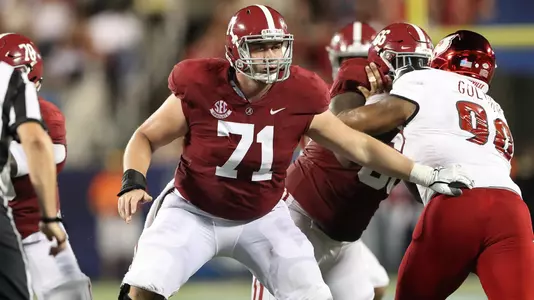Alabama Football Summer Report: Navigating the Overflowing Talent in the Crimson Tide’s Defensive Backfield
Alabama football has long been known for its dominance on defense, and under head coach Nick Saban, the Crimson Tide have been a breeding ground for top-tier defensive talent. From monstrous defensive linemen to instinctive linebackers, Alabama’s defense has been a fortress for years. However, the position group that has perhaps benefited the most from this reputation is the defensive backfield.
The Crimson Tide’s defensive back (DB) room is perhaps the most competitive and talent-laden unit in the entire program as we head into the summer. With a wealth of talent at cornerback and safety, the biggest question for Alabama heading into the 2023 season isn’t whether they have the talent to field a dominant secondary—it’s how Nick Saban and defensive coordinator Kevin Steele will manage the overflow of talent in the defensive backfield.
This summer, as the Tide prepares for another championship run, there are several key storylines surrounding the DB room that are worth exploring. With an abundance of elite prospects, both experienced players and incoming freshmen, there are many moving parts that will influence the success of Alabama’s secondary. From managing depth, ensuring proper development, and identifying the right mix of players to take the field, Saban and his staff have their hands full. However, in typical Alabama fashion, this is a good problem to have.
At the heart of Alabama’s DB room is a mix of established veterans, young rising stars, and highly-touted freshmen—all of whom are eager to make their mark on the field. With so much talent on the roster, the biggest question is how this wealth of players will translate into playing time.
Alabama’s cornerback group is arguably the deepest it’s been in recent memory. With multiple players capable of starting at a high level, the battle for playing time will be fierce. The Crimson Tide have a number of cornerbacks who not only possess high football IQ but also the athleticism and skill to cover the top receivers in the nation.
Eli Ricks, a former five-star recruit and transfer from LSU, is expected to be one of the cornerstones of the secondary. A shutdown corner with excellent ball skills, Ricks has the ability to lock down any receiver and has shown the ability to make game-changing plays. After spending a year learning the system, he’s primed to take on a larger role this season. The question, however, will be whether he can form the kind of chemistry with the other corners and safeties needed to establish the kind of consistency that Saban demands.
Right alongside Ricks is Kool-Aid McKinstry, another standout cornerback who has proven to be an elite playmaker. McKinstry has already earned a reputation as one of the top cornerbacks in the SEC and is known for his lockdown coverage, ability to anticipate plays, and return skills on special teams. With a year of experience under his belt, McKinstry has the tools to become one of the premier cornerbacks in the nation.
Other cornerbacks such as Terryon Arnold, Jahlil Hurley, and Jaheim Singletary provide Alabama with depth that few other programs can match. Arnold, in particular, has shown flashes of brilliance and will be fighting for a more significant role in 2023. Hurley and Singletary, both young talents, bring a wealth of potential and could see increased action depending on how the competition shakes out in fall camp.
With so many cornerbacks competing for playing time, the task for Saban and Steele will be to identify the best starting tandem, while also finding ways to utilize the depth without causing issues with player development. Given the importance of the cornerback position in Alabama’s defense, finding the right balance between experience and youth will be critical in maintaining the consistency and excellence the team is known for.
The safety position, while not as top-heavy as the cornerbacks, has its own set of dynamic players who offer plenty of versatility. Alabama’s safeties have the unique ability to play in a variety of roles, whether it’s in coverage, run support, or playing close to the line of scrimmage. The competition here is equally fierce, as several players will be vying for the starting spots.
Jordan Battle, one of Alabama’s most experienced and proven defenders, is set to be the leader of the secondary. A multi-year starter, Battle brings a wealth of experience and football intelligence to the safety position. He’s known for his ability to read the quarterback and make timely interceptions, and his leadership will be a huge asset to a unit that has several players still learning the ropes.
Beside Battle, DeMarcco Hellams also returns as a steady presence at safety. Hellams has had his ups and downs over the years but brings both versatility and physicality to the defense. He is a hard-hitting safety who can thrive in both coverage and as a run defender. His ability to make plays at or near the line of scrimmage gives Alabama a well-rounded safety who can make a difference in all areas.
Alabama also boasts a collection of young safeties with massive potential, such as Brian Branch, Devonta Smith, and Malachi Moore. Branch, in particular, is known for his speed and ability to cover the field quickly. Moore, who’s coming off a strong spring, could push for significant playing time and bring additional flexibility to the secondary. These players, while young, have shown they can compete at a high level and will likely be in the rotation, with the opportunity to develop into star players as the season progresses.
The big question for Alabama will be how to best utilize the talent at safety. With so many players who can excel in different roles, Saban will have to carefully orchestrate a plan that maximizes each player’s strengths without diluting the overall effectiveness of the unit.
With such an overwhelming amount of talent in the defensive backfield, managing playing time and ensuring proper development for each player becomes a critical task. Nick Saban is known for his ability to develop talent, and part of his success comes from his ability to balance the playing time of his players, particularly those in the defensive backfield, where the speed of the game can be overwhelming for younger players.
Alabama’s DB room is deep enough that it allows Saban and his coaching staff the luxury of rotating players in and out of the lineup, ensuring that they can keep everyone fresh while also developing younger players. While Alabama’s starting cornerbacks—likely Ricks and McKinstry—will get the majority of the snaps, Saban has always placed an emphasis on keeping players fresh, which is why Alabama’s ability to rotate and substitute is crucial. The Tide’s defense thrives on being able to pressure the quarterback while maintaining tight coverage, and having a fresh rotation of defensive backs is key to this approach.
Moreover, the pressure for young players to see the field is intense, especially in a secondary that is home to so many talented veterans. However, this kind of competition is what makes Alabama’s defense so successful. Players know that if they are going to earn playing time, they need to compete at a high level. For Alabama’s younger players, this could mean significant growth in a short amount of time, as they will be pushed by the top-tier players already on the roster.
For the coaching staff, finding the right combination of players on the field will also involve ensuring that the DB room remains cohesive. Chemistry is critical, particularly when players are asked to switch between different roles or alignments. It’s not just about having the best players on the field but having players who can communicate and operate in unison. This will be one of the key challenges in the coming months as the staff prepares for the 2023 season.
One of Nick Saban’s greatest strengths has always been his ability to adapt. The college football landscape has changed dramatically over the past few years with the rise of high-powered offenses and the increasing emphasis on passing games. Saban’s response has been to continuously innovate his defensive approach, ensuring that Alabama’s defense remains one of the best in the nation, regardless of what new trends emerge.
In this era of spread offenses and uptempo tempo play, having a deep, versatile secondary is more important than ever. Saban has adapted his defensive backfield to be faster, more flexible, and more skilled at handling the types of offenses that dominate today’s game. The inclusion of multiple players who can contribute in various roles—whether it’s cornerbacks who can shadow the best receivers or safeties who can play in the box or cover ground quickly—ensures that Alabama’s defense will remain one of the best in the nation.
With the overflow of talent in the DB room, it’s clear that Saban will have to make strategic decisions that allow all of these players to develop and contribute, while also maximizing the defense’s overall efficiency. With a mix of experience, youth, and versatility, Alabama’s secondary is poised to play a huge role in the team’s championship aspirations.
As we move into the summer months and look ahead to the 2023 season, one thing is certain: Alabama’s defensive backfield is one of the most talented, competitive, and deep units in all of college football. With an impressive combination of established stars, young up-and-comers, and versatile players, the Tide’s DB room is poised to be a key asset in their quest for another national championship.
Managing this overflowing talent will be one of Nick Saban’s most important tasks, but with his track record of success, there is little doubt that he will find a way to make



